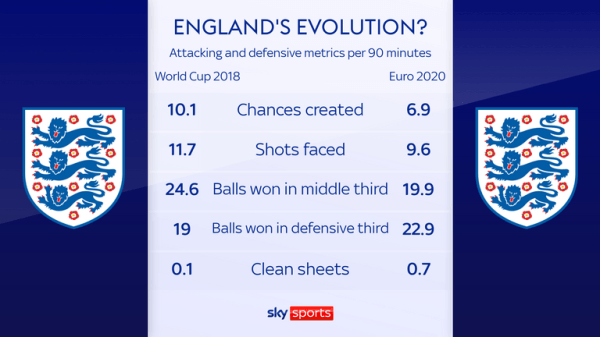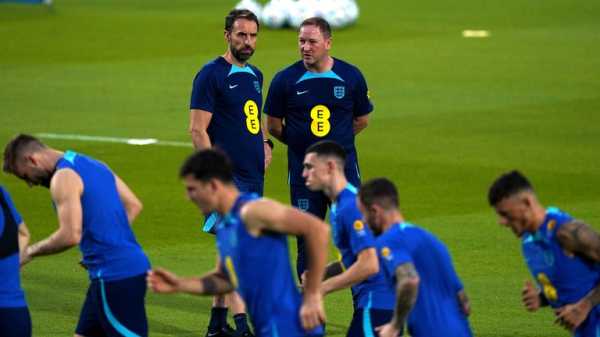
Gareth Southgate has overseen a period of success for England, unparalleled since 1966. And yet he is still labelled as a manager who is “too defensive”, a coach who is “over-cautious”, someone who “doesn’t maximise the attacking talent” at his disposal.
To a large extent, much of that criticism is accurate, but not fair.
For a start, let us look at the squad Southgate has picked for this World Cup. England have included nine defenders in their 26. Most other nations in Qatar have named 10 defenders, as Southgate has done in previous tournaments.
Southgate has consistently said being the England manager is not “fantasy football” and that while it’s undeniable he has a vast array of attacking talent to choose from, they can’t all be in the starting XI.
That’s absolutely correct. It’s impossible to accommodate Phil Foden, Jack Grealish, Raheem Sterling, Bukayo Saka, Marcus Rashford, James Maddison and Mason Mount, and give them all the game-time they crave.
Trending
- Papers: Elanga defends Ronaldo on criticism of younger players
- World Cup 2022 schedule, teams and draw
- Australia make breakthrough after Vince and Billings partnership for England LIVE!
- Man Utd looking to terminate Ronaldo’s contract
- Brazil winners? Belgium to flop? Pundits’ World Cup predictions
- Ronaldo interview reveals his failure to accept his own decline
- Transfer Centre! Arsenal’s Edu agrees new deal and promotion
- Every World Cup squad named
- Hamilton confident of challenging Red Bull | ‘We’re right there’
- F1 season finale! When to watch Abu Dhabi GP live on Sky
- Video
- Latest News
That’s seven of the best attacking players in the Premier League. And it doesn’t even take the strikers into consideration – one of whom won the golden boot at the last World Cup.
But above and beyond the numbers, what about Southgate’s philosophy? I would argue it is pragmatic. Defensive – but not negative.
Also See:
Why defence is a priority for Southgate at tournaments
When Southgate took over as England manager, he and his assistant Steve Holland set about to analyse exactly why it was that generation upon generation of England teams had under-performed at major tournaments.
They couldn’t understand why the team always seemed to cruise through qualification, only to stumble in finals.
When he was U21s manager in 2014 Southgate was a key architect of the “England DNA” programme, alongside Dan Ashworth – then FA director of elite development.
The centre of that plan was creating a pathway for young talent to progress to the senior team and be ready to win.

As part of our documentary Gareth Southgate: Making A Manager, we take a look back at the England manager’s tournament experience so far.
But they also studied what had made Italy and Germany, for example, the polar opposites of England, by seemingly being perennial success stories in major finals, whatever form they were in going into the tournament.
Part of the conclusion was that the most successful teams in tournaments were also the most miserly.
In basic terms, in knockout games, if you didn’t concede, you couldn’t lose.
- Iran, USA and Wales – the expert guide to England’s World Cup Group
- England’s route to glory at 2022 World Cup | World Cup fixtures
- Download the Sky Sports app | Team guides | World Cup news
And so Southgate determined that his England teams would be based upon a strong defensive foundation.
Datawrapper Due to your consent preferences, you’re not able to view this. Open Privacy Options
In the last World Cup in Russia, England let in four goals in their first five games, before defeat in the semi-final to Croatia. They’d kept only one clean sheet.
In the post-tournament analysis, Southgate and Holland decided England needed to be tighter.
At the Euros in the summer of 2021, England didn’t concede a single goal until the semi-final against Denmark. That’s five games and five clean sheets. And England were ultimately a couple of penalty kicks away from lifting their first major trophy in 55 years.
Proof, Southgate felt, that his approach was correct.
So it’s naive to think that he will suddenly change his philosophy now, when he is convinced his research and tactics have been thoroughly vindicated.

Gary Neville, Karen Carney, Jamie Redknapp and Jamie Carragher give their predictions on who they believe will start for England in their first match against Iran, and who will be most valuable for Southgate throughout the tournament.
The England boss is criticised for regularly including two defensive midfielders in his starting XI, even against some of the ‘non-elite’ of world football. He may well do so again against Iran in the opening Group B game, because Declan Rice is a shoo-in and Kalvin Phillips needs the game time after recovering from shoulder surgery.
And we should expect that approach to continue in Qatar because Southgate knows that England’s defence is the team’s Achilles’ heel and he will try to protect it at all costs.
England are more vulnerable defensively in this tournament than ever before in Southgate’s reign. Reece James and Ben Chilwell are missing through injury, Kyle Walker is in the squad but recovering from groin surgery, and Harry Maguire is miles from being picked first in the Manchester United pecking order.

And so it is inevitable – and understandable – that Southgate will want a buffer in front of his defence.
What’s behind Southgate’s back-three/back-four tactical decisions…

Image: Gareth Southgate and assistant Steve Holland have a tried and tested approach to England's tactical set-ups
Likewise, Southgate is criticised for favouring three centre-backs in a 3-5-2 formation. The argument goes: ‘Why do you need three central defenders against teams that will sit deep against England, as we expect Iran to do?’
It’s a very fair perspective, which many pundits have voiced.
Southgate’s answer, privately, is that the formation frees up England’s wing backs to push on and offer more wide attacking options.
Whatever formation this England squad choose, they attack with five players and defend with five players. That is no different if it’s a flat back four, or a back three.
That needs some explaining, so here goes…
With a back four, England are like most club sides – the full-backs are under instruction to liaise with each other, and if one pushes forward to support the attack, the other is expected to sit in and cover any quick breaks by the opponent.
With three centre-backs, both of England’s wing-backs are given licence to push forward at the same time because there is sufficient defensive cover for them should an attack break down.
So with either formation there are (supposed to be) three defenders and two defensively-minded midfielders to break up opposition attacks. And, as a result, there are five attack-minded players who are expected to go and get the goals.

The World Cup preview show panel discuss England’s World Cup opponents in Group B and analyse how far Iran, USA and Wales can go in Qatar.
What is the main difference between the two formations is the direction of attack. If Southgate’s analysts believe an opponent is vulnerable out wide, he may opt for three centre-backs. Having two freely-attacking wing-backs in the England line up – as well as two wingers – makes sense, to try to expose that weakness.
If the England coaches believe the opposing full-backs are strong, and a narrow attack would create more opportunities, then a flat back four might work better, with an extra England attacking player in a central position.
Similarly, if the analysis shows an opponent has strong wide attacking options of their own, having two England wing backs that push on and leave a lot of space in behind, is senseless.
To sum up – it is over simplistic to say that Southgate is overly-cautious, though it is absolutely fair to say that Southgate is defensively-minded.
And, after reaching the final of the Euros just 16 months ago, do not expect him to change his tactics in Qatar.
2022 World Cup draw
- Group A: Qatar, Ecuador, Senegal, Netherlands
- Group B: England, Iran, USA, Wales
- Group C: Argentina, Saudi Arabia, Mexico, Poland
- Group D: France, Australia, Denmark, Tunisia
- Group E: Spain, Costa Rica, Germany, Japan
- Group F: Belgium, Ghana, Morocco, Croatia
- Group G: Brazil, Serbia, Switzerland, Cameroon
- Group H: Portugal, Canada, Uruguay, South Korea

Super 6 Activates International Mode!
Super 6 is going International! Could you win £100,000 for free? Entries by 1pm Monday.
Sourse: skysports.com






